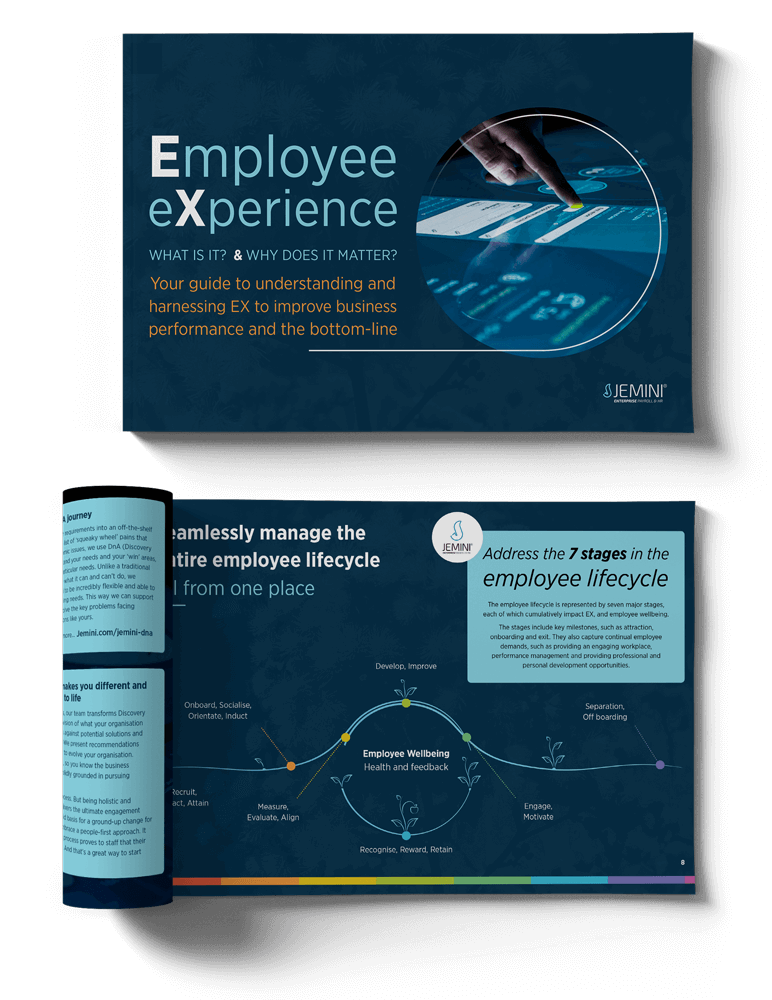Most of us know a horror story from somebody’s first day at work, including our own bad experiences. The truth is, the first day in a new job can arouse the same feelings of dread associated with the first day at a new school.

There are so many expectations on both sides; the employee wants to make the best first impression and so does the employer. After all, we’re living in an era where people expect a lot, lot more from their employer.
Why is onboarding so important to the reputation of your business?
With the transparency of social media and the anonymity of platforms like Glassdoor, people can quickly and easily spread the word about poor or less than ideal experiences within your business, broadcasting messages that will be seen not only by other prospective candidates, but by your end-clients too.
Irrelevant of the size of your organisation, the onboarding process for new people should be structured, repeatable and scalable. Since not every company has a dedicated HR team, the onboarding process needs to be understandable and easy enough for anyone to use. The good news is that modern HR software, especially those that live in the cloud make onboarding easy, automating many of the steps.
One of the biggest negative experiences that new employees cite is that of arriving at a company that is not actually ready to take them on and get them up to speed, let along having the technology they need to do their job. This is often due to a breakdown of communication in the business.
A successful, efficient onboarding process sets the tone of the experience from day one. It has the potential to blossom into a memorable day for the right reasons, or blow out of proportion and be a lasting memory for the wrong ones.
Create the perfect employee onboarding checklist
Without a consistent process in place, the onboarding experience can differ wildly from one new employee to another. A defined process makes things more painless and efficient for you, while ensuring every new hire gets the same great first impression about your business.
Use the below ideas to set up a checklist template in your HR software, that you can use time and time again
1. Timing is everything - before, during and after
Diarise key onboarding tasks, split into things that need to happen before, during and after. Think about the things that need to be ordered in advance, so they arrive just in time. There’s nothing worse as a new recruit being told that you’ll need to wait a whole week before receiving your company laptop.
2. Put together a fantastic swag-bag
Have you seen those photos on LinkedIn where people show off their new goodies? Receiving some ‘swag’ will create an instagramable and happy moment worth shouting about. A coffee mug, some chocs (and an umbrella if you’re in a rainy place) is all that it takes. Perhaps you could make them a bit more sustainable and plastic free?
3. Make sure the technology is fired up and ready to go
Your company is expecting its new hire to make a great first impression. There’s nothing worse than the CEO walking by and asking “why hasn’t Anita been able to do any work on her first day?” - only to be told that the software licenses hadn’t been provisioned yet. By planning system setups ahead of schedule, new hires can get to work fast, without creating unnecessary stress.
4. Get all the paperwork ship-shape
Contracts of employment, NDAs and bank/tax information are not the most exciting part of welcoming a new team member, but it is crucial that these are completed properly in a timely fashion and stored securely. Upload all the paperwork to a collaborative workspace in your HR software. It’s even better if you can use virtual/digital document signing. Make sure your employee knows exactly what needs to be completed and by which dates. Reassure them about cut-off dates to ensure they will get paid during their first month or week.
5. Ensure they have a buddy - especially during the first week
The modern workplace, with its hot-desks, regional hubs and working-from-home setups means that new recruits can get lost and forgotten about, potentially leaving them anxious and isolated. Give them access to someone they can check-in regularly with for help or just to see how everything is going. The buddy doesn’t need to be in the same department - and is ideally not their line manager.
5. Are they sitting comfortably?
Workplace health and safety rules means every employer is required to make a safety assessment including for desk-based workers. Can your new employee sit comfortably in an appropriate place for work? This is especially important to think about for your home based workers.
6. Schedule their invites to upcoming company socials and briefings
Make your new hires feel at home as rapidly as possible. Ensure they know about upcoming social events, events, conferences and even charitable initiatives. Get these in the calendar ASAP.
7. Introduce them to the wider team, including the CEO and senior team
Ideally on the first day, introduce new recruits to their team and the wider business. Help them understand how the business operates holistically; this could mean a physical or virtual tour that helps people really understand how teams fit together. A drop of afternoon tea might also help! If you use a company-wide communications platform like Microsoft Teams or Slack, a nice intro in your main channel would be a good gesture.
8. Do they understand their roles and responsibilities?
Job descriptions can be fluffy and vague. Ensure new hires truly understand the company vision and what is expected of them on a daily, weekly and monthly basis. Draw their attention to KPIs and objectives, so they know exactly how they will be measured and evaluated.
9. Immerse new hires in company culture, customs and stories
Point your new team members in the direction of blog posts, content and videos that explain what makes your culture unique and special. They should understand the mission, vision and purpose of your organisation and how it relates to their role.
10. Diarise check-in sessions - for the first week, first month and first 90 days
The first month is probably the most critical in helping new employees find their feet, enabling them to really thrive. Ensure weekly 1-2-1s are booked during the first month and then after the first 90 days. These will help put people at ease and help ‘snag’ any small issues that arise.
11. Introduce them to your wellbeing and benefits offer
Introduce team members to your wellbeing, health and benefits offer as soon as possible so they can take advantage of the perks on offer. Many companies now pay for or subsidise gym access and mental health support and mindfulness. These are relevant to everyone - whether they work in the office, out in the field or from home.
12. Ask for feedback about the onboarding process
By asking for feedback about the onboarding process, you can ensure the experience and process gets better and better over time. A simple confidential survey is all that it takes to get this off the ground.
Our handy checklist was put together with best-practice ideas for before, during and after the onboarding process. Enjoy and do let us know if you have any other tips you’d like us to add to this…
Explore more
Share this page
Ready to transform your HR & Payroll process?





